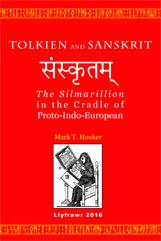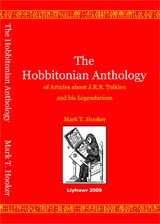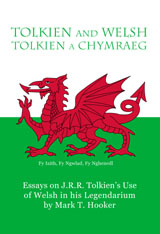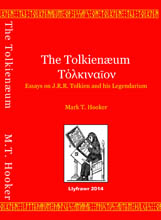|
Also by this author: 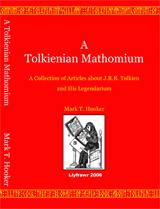
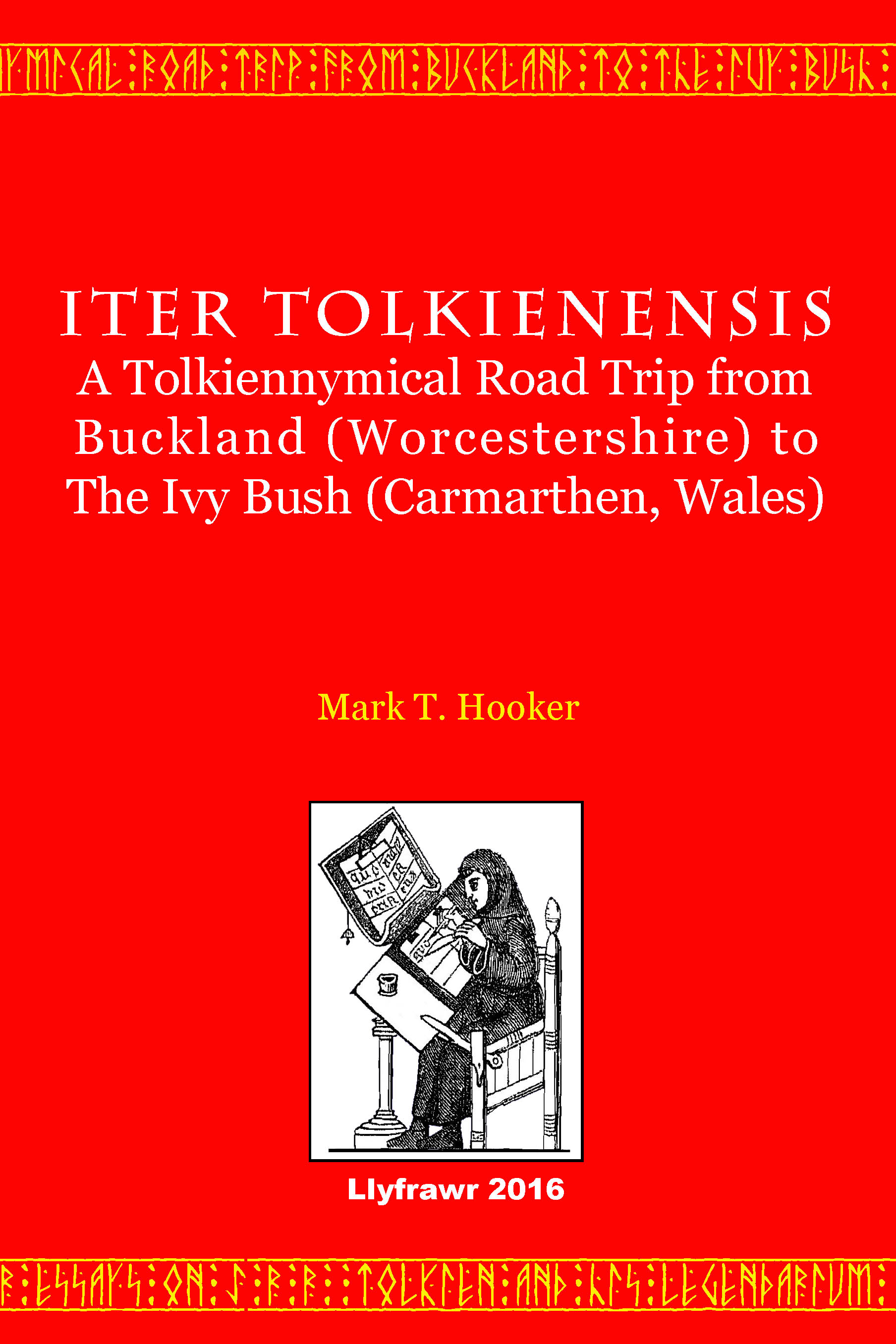
|
This is the expanded second edition of Tolkien and Sanskrit. It is, as a cinematographically minded wag phrased it: “The Director’s Cut."
From the PrefaceThe analysis that follows is not a rehash of the discredited ideas of The Shores of Middle-earth (1981) by Robert Giddings and Elizabeth Holland.[1] It is instead, a completely new, linguistic approach to Tolkien’s Silmarillion nomenclature. Tolkien said that for him “a name comes first and the story follows.” (L.219) That is the approach of this study. It does what linguists have been doing since before Proto-Indo-European was a gleam in the eye of Sir William Jones; it tries to find out what words and names mean. This study is based on the observation that Tolkien calqued the names of the Sapta Sindhavah (Seven Rivers) from the Rig Veda as the Seven Rivers of Ossiriand. In other words, Tolkien created seven Elvish river names that mean the same thing as the river names of the Sapta Sindhavah. Much has been said of Tolkien’s use of Welsh, Old English, Gothic, Icelandic, Russian, Greek, and Latin. Little, however, has been said about Tolkien’s use of Sanskrit (Refined Speech), the great-great-…grandfather of all the languages above. Sanskrit was spoken in the second millennium B.C. in the valley of the River Indus, the river that put the “Indo” in the name Proto-Indo-European, a linguistic term for the *reconstructed common ancestor of the European languages. All indications to the contrary (C&G ii, 461), there is little doubt about Tolkien’s knowledge of Sanskrit from the point of view of a linguist. It is de rigueur for any serious philologist interested in etymologies like Tolkien. Tolkien was on the Language side of the English School at Oxford, where he took Comparative Philology as a special subject for Honour Moderations. (G&G ii, 758) In a certain sense, Tolkien’s The Silmarillion can be considered a veiled member of the genre of Raj Literature (see “Appendix C”). The names of The Silmarillion say that in the same way that the names in Tolkien’s poem “The Mewlips” are masks that hide the fact that it is a poem about World War I.[2] As the present study shows, the names of The Silmarillion say that the locus of Tolkien’s “Mythology for England” (C&G ii, 244-248) is the India of the British Raj. When the sun never set on the British Empire, India was what the letters of Tippoo Sultan[3] call the brightest “Jewel in the Crown” of Empire. The characterization of the British relationship with India by Morris[4] in his Pax Britannica is that:
For two countries that were—in Tolkien’s day—‘indissoluble,’ a “Mythology for England” seems inconceivable without a bit of the Raj intertwined with it. Lewis[5] observes that “the British image of India has always been dual in nature: India is seen as beautiful and alluring, but also dark, dangerous and threatening.” One of the salient plot elements in Raj Literature from the second half of the nineteenth century and the pre-war years of the twentieth was the Indian Mutiny in 1857. The Mutiny made it into novels by such British authors as W.H.G. Kingston, G.A. Henty, Captain F.S. Brereton, and Sir Arthur Conan Doyle, as well as the French author Jules Verne. Gupta’s thematic index to English fiction about India[6] lists 80 titles about the Mutiny.
|
The sack of Menegroth by the Dwarves and subsequent reprisal against the Dwarves by the Elves seem to echo the Mutiny, because the Dwarves had cooperated with the Elves, providing them with craftsmen, jewelers and armorers. The Dwarves, however, broke trust with the Elves, killed King Thingol, and stole the Silmaril—literally the ‘Jewel in the Crown,’ the salient English metaphor for India—in a sort of replay of what the mutineers of 1857 tried to do.
A literary analysis of Tolkien’s place in Raj Literature is, however, much more speculative than the linguistic analysis that makes up the core of this study, which stands on solid philological ground. The literary analysis will, therefore, be left to another time and place. In the meantime, “Appendix C: Raj Literature” provides “An Annotated, Select Bibliography of Raj Literature” for those who would like to do more reading on the topic.
This study started with an analysis of the names of the Seven Rivers of Ossiriand. They are nothing more than a calque of the names of the Seven Rivers of the Sapta Sindhavah. This philological trick is, in essence, an Easter Egg that Tolkien left to be discovered by inquisitive linguists. In the jargon of the digerati, an Easter Egg is an inside joke, a hidden message, or image hidden in a computer program. As first used, the name Easter Egg was intended to recall the search for eggs in the traditional Easter Egg Hunt.
Tolkien was way ahead of his time. The first recorded Computer Easter Egg was hidden in 1979, in the video game Adventure, which was written for the Atari 2600 video game console. Easter Eggs have since become relatively common, and many result in funny things happening. In the run-up to the release of The Hobbit Movie, Google Maps installed a Tolkien Easter Egg. When requesting directions, if the starting location was given as ‘The Shire,’ and the destination as ‘Mordor,’ clicking on instructions for ‘walking’ returned: “Use caution — One does not simply walk into Mordor.”[7]
The sources used in this study are, wherever possible, from before World War I, because that was the time that Tolkien began work on The Silmarillion. (S.7) While these sources may seem dated to some, or not reflective of current thinking on the topics they cover, this is irrelevant, because the focus of this study is on what Tolkien thought about these topics, not on what modern authors believe they know now.
The spelling of the sources has been maintained to underscore the fact that standardized spelling is a modern construct that has not always been as immutable as modern readers seem to think it is. Changing the spellings of the sources would be contributing to the process of hypercorrection, which more often obscures the original meaning of a word or a name than makes it comprehensible.
This study makes no pretense of having exhausted the topic, and the author wishes any researchers who would care to build on its results “Break a leg!”.[8]
While the basis of Tolkien’s calque of the names of the Seven Rivers as Ossiriand is Vedic in concept, the superstructure that Tolkien builds upon this foundation is non-Vedic. The nickname of the River Ascar (the Vedic Vitastā), for example, is from classical Latin sources. The other elements of the superstructure are more readily attributable to historical sources, like the history of the India Campaign of Alexander the Great, and the history of the British Raj in India, both of which were a part of the school curriculum when Tolkien was growing up.
While the analysis of some of the words | names in this study would not be believable in stand-alone articles, in the context of the coherent structure of words and names presented here, they are worthy of serious consideration.
While this is a book about a philologist’s linguistic creations, by a linguist, I’ve tried to envision a non-linguist reader with the hope of making the topic accessible to a larger audience. The unavoidable jargon of the field is explained in a glossary. Specialists in the field are kindly requested to read the definitions, because—as readers have pointed out—there are distinct variations in the ways that various linguistic schools use these terms, and the jargon of my school might not coincide entirely with your school’s jargon.
The presence of identifiable Indian geography coupled with Sanskrit names, word forms, and legends does not, however, make Tolkien a copyist, but rather, as Miesel so sagaciously points out, “Tolkien’s orderly mythological adaptations are as creative as his own original inventions for The Lord of the Rings. He is no plunderer quarrying an ancient palace for stones to build a hut, but a master jeweler recutting and repolishing old gems for new settings.”[9]
The discovery presented here has the potential to more clearly define the linguistic and philosophical cradle of Tolkien’s ‘Mythology for England,’ which was always The Silmarillion, and never The Lord of the Rings. It is Proto-Indo-European in the same way that the English language stems from Proto-Indo-European. That does not, however, mean that there is no gap between Proto-Indo-European language and culture, and the language and culture of The Shire. The salient similarities and differences were originally only visible to a linguist like Tolkien, but, with this discovery, they can now be considered by non-linguists as well
Linguistic invention is a product of the mind, and is, therefore, not governed by the fixed and immutable rules of the sciences. As Albert Einstein once said, imagination is greater than knowledge. Since Tolkien is no longer with us, no “proof” of the analyses presented here is possible. The facts, therefore, must speak for themselves—as they do in the *reconstructions of Proto-Indo-European words—when no documentary evidence is available.
Mark T. Hooker
Bloomington, IN, USA, June 2016
[1] See the review at TolkienLibrary.com.
[2] For a more detailed discussion of “The Mewlips,” see: Hooker, “Longdon,” Iter Tolkienensis, Llyfrawr, 2016, pp. 94-98.
[3] Major General Kirkpatrick, “Select Letters of Tippoo Sultan to various Public Functionaries,” The British Critic: And Quarterly Theological Review, volume 38 (July to December 1811), December 1811, p. 548.
[4] James Morris, Pax Britannica: The Climax of an Empire, New York: Harcourt, Brace & World, 1968, p. 41.
[5] Robin Jared Lewis, “The Literature of the Raj,” Asia in Western Fiction, Manchester University Press, 1990, p. 59.
[6] Brijen K. Gupta, India in English Fiction, 1800-1970: An Annotated Bibliography, Metuchen, N.J.: The Scarecrow Press, 1973, p. 286.
[7] Keith Wagstaff, “Google Maps Easter Egg: ‘One Does Not Simply Walk Into Mordor’,” Time Magazine (on-line), posted Dec. 21, 2011.
[8] For my readers who are not native speakers of English: the expression “Break a leg!” is a euphemism to skirt the theatrical superstition that wishing someone “Good luck!” brings on bad luck.
[9] Sandra Miesel, Myth, Symbol & Religion in The Lord of the Rings, T.K. Graphics, 1973, p. 38.
Includes maps, B&W illustrations, bibliographic references and index.
Pagination: xlvi + 216. Trade Paper $14.95
To learn more about the book, follow the links below.

